Physical Address
304 North Cardinal St.
Dorchester Center, MA 02124
A scaphoid fracture is considered acute when presenting within 6 weeks of injury. Fractures in which presentation is delayed have poorer healing potential and a higher likelihood of progressing to nonunion with or without surgical intervention.
The decision to pursue operative or nonoperative intervention depends on a number of factors, including fracture location and pattern within the scaphoid, displacement or deformity, associated ligamentous injury, and patient preferences.
The duration of immobilization and union rates with nonoperative treatment differ based on the location of the fracture.
Distal pole fractures heal more quickly than waist or proximal pole fractures.
Union rates for nonoperative treatment of nondisplaced distal pole fractures approach 100%, compared with 95% for waist fractures and only 70% for proximal pole fractures. Therefore operative treatment should be considered for any fracture displaced more than 2 mm or any proximal pole fracture, regardless of displacement.
Operative treatment of nondisplaced fractures will enable accelerated rehabilitation and earlier return to work or athletic activity and may be preferred in laborers, athletes, or highly active patients.
Specific indications for operative treatment are reviewed in Table 25.1 .
| Injury Characteristic | Operative Indication |
|---|---|
| Fracture location ( Fig. 25.1 ) |
|
| Angular deformity | Certain radiographic parameters are associated with carpal instability and warrant operative treatment: |
| Comminution/bone loss | These fractures will lead to shortening and predispose to degenerative wrist disease. They warrant operative treatment, potentially with bone grafting of the fracture gap. |
| Perilunate injury | Any scaphoid fracture occurring in the setting of a perilunate fracture dislocation should be treated operatively because these injuries are highly unstable. |
| Open fracture/polytrauma | Surgical stabilization is warranted in settings requiring irrigation and debridement for open fracture and/or operative treatment of other fractures. |
| Ipsilateral distal radius fracture | Fixation of the scaphoid and distal radius fracture can be performed concurrently through an extended volar approach. |
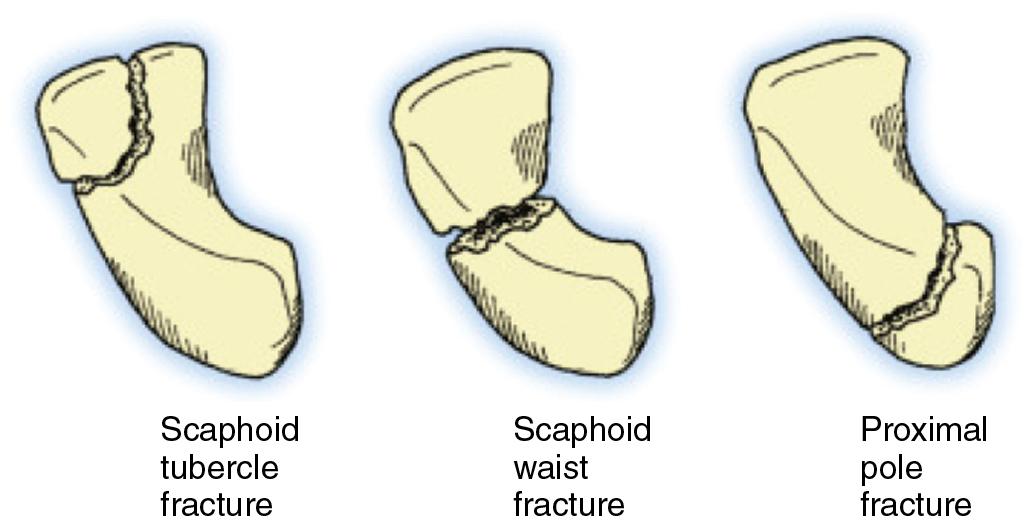
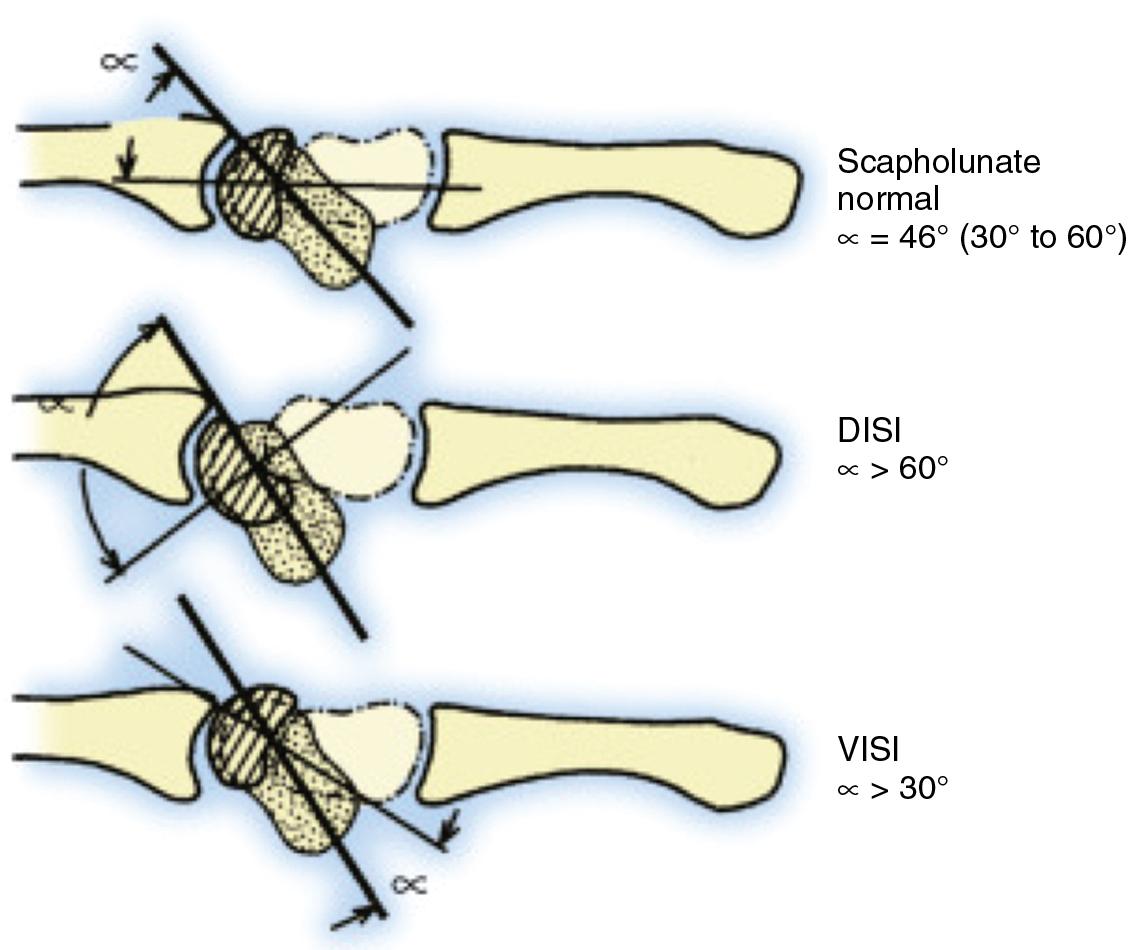
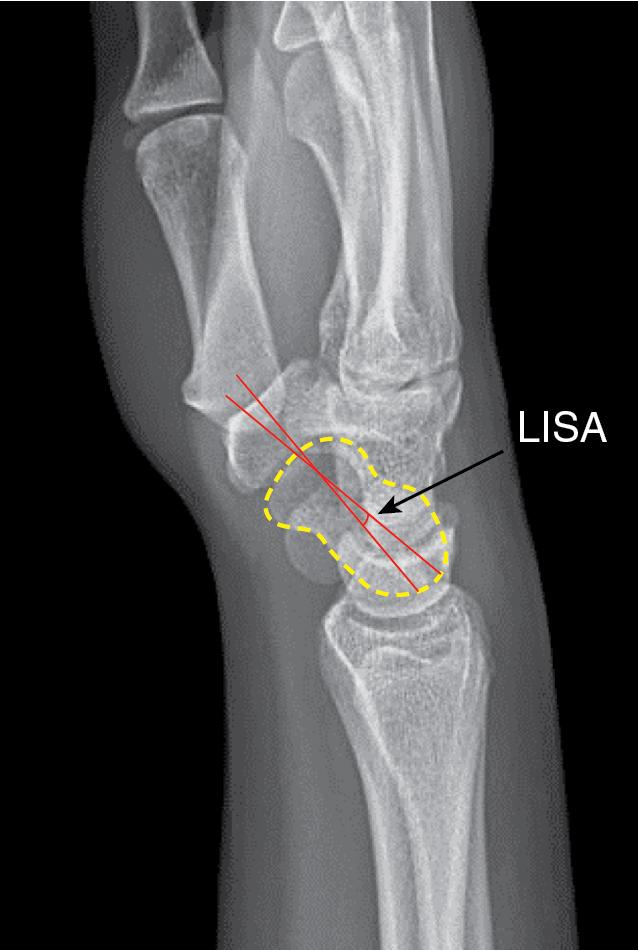
There are few true contraindications for surgery in displaced scaphoid fractures.
Highly comorbid patients or patients with active hemodynamic compromise or systemic infections should have medical issues managed before considering operative treatment.
A strong patient preference for nonoperative treatment, particularly for nondisplaced fractures, warrants an appropriate period of immobilization and close observation.
History usually includes a fall onto an outstretched hand in a patient younger than 40 years of age ( Fig. 25.4 ).
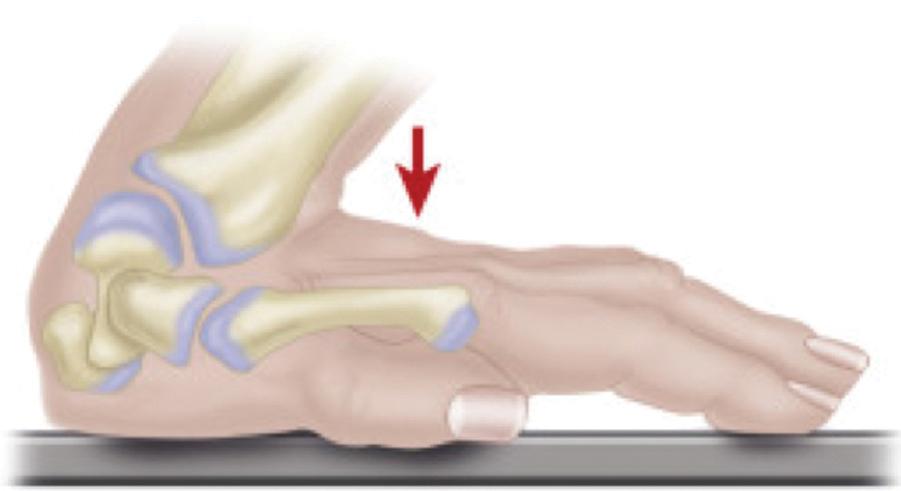
The injury may also occur in the context of a high energy trauma with perilunate dislocation.
The classic mechanism is an axial load onto an extended and ulnarly deviated wrist.
The combination of snuff-box tenderness, scaphoid tubercle tenderness, and pain with axial compression of the wrist is highly characteristic of a scaphoid fracture ( Figs. 25.5 and 25.6 ).

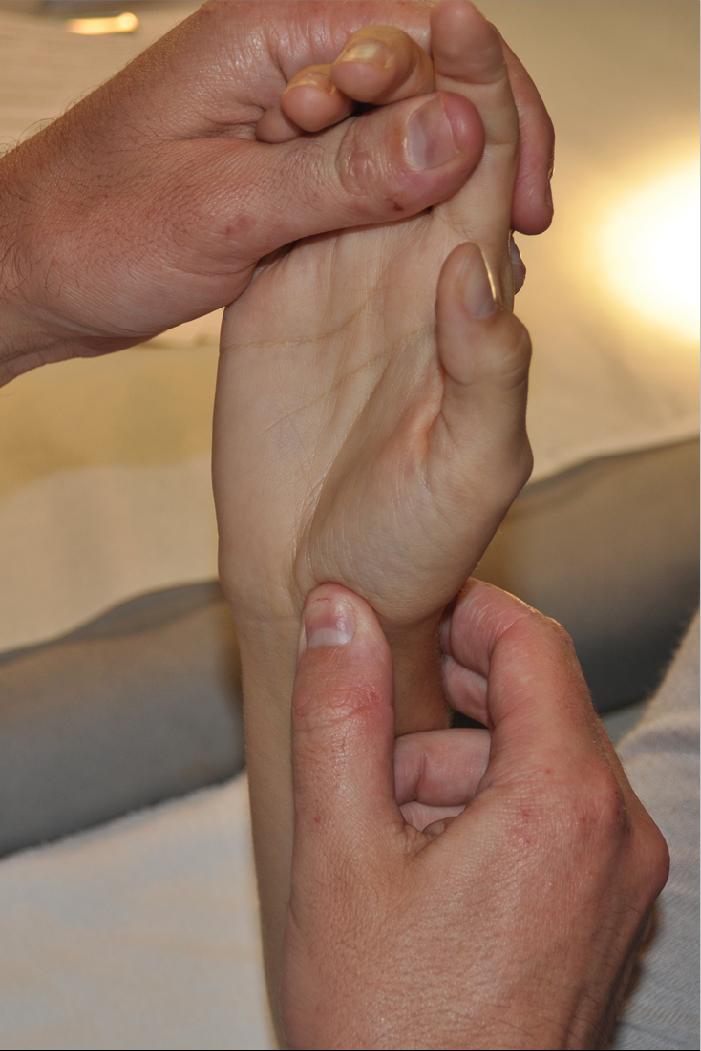
The initial x-ray series should include standard posteroanterior (PA), oblique, and lateral wrist x-rays ( Fig. 25.7A–C ) and a scaphoid view (see Fig. 25.7D ).
![FIGURE 25.7, Radiographs demonstrating a fracture of the scaphoid waist: (A) posteroanterior [PA], (B) pronated oblique, (C) lateral, and (D) scaphoid view. FIGURE 25.7, Radiographs demonstrating a fracture of the scaphoid waist: (A) posteroanterior [PA], (B) pronated oblique, (C) lateral, and (D) scaphoid view.](https://storage.googleapis.com/dl.dentistrykey.com/clinical/Openreductionandinternalfixationofacutescaphoidfracture/6_3s20B9780323794152000342.jpg)
The scaphoid view brings the plane of the scaphoid from a flexed to a neutral position through ulnar deviation at the wrist to better visualize the entire bone.
Additional views that can be considered include a clenched fist PA, which increases the axial load across the wrist and may make the fracture more apparent, and a pronated oblique view.
The incidence of false-negative plain x-ray diagnosis of acute scaphoid fracture is 10% to 30%. When initial x-rays are negative and there is a strong clinical suspicion for scaphoid fracture, several diagnostic strategies can be used:
The traditional approach has been to immobilize the patient in a thumb spica splint and repeat x-rays in 2 weeks when the fracture line is more radiolucent. This strategy has been found to be less cost-effective than immediate magnetic resonance imaging (MRI) or computed tomography (CT), but it is still preferred in many centers.
MRI is the most cost-effective, sensitive, and specific imaging modality for identifying acute scaphoid fractures. Cortical disruption in the presence of bone marrow edema is diagnostic ( Fig. 25.8 ). MRI is also useful for determining vascularity when the timing of the injury is unknown and avascular necrosis is suspected.
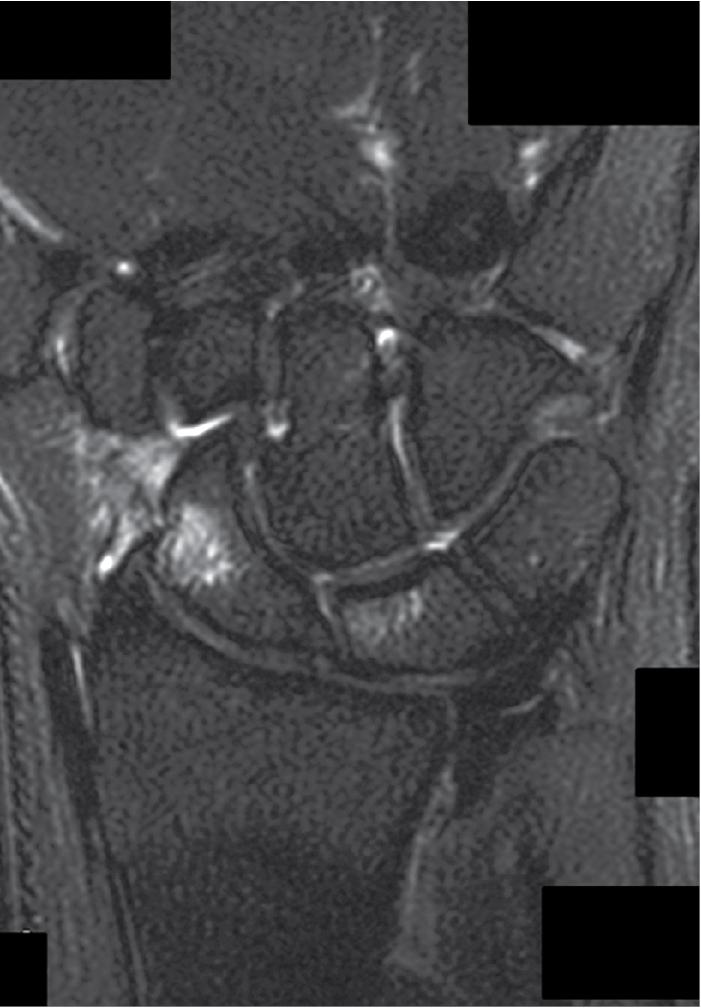
CT can diagnose occult scaphoid fractures when MRI is not available. CT demonstrates excellent bony detail for preoperative planning but is less sensitive and specific than MRI and exposes the patient to radiation.
Eighty percent of the scaphoid is covered by articular cartilage, leaving limited space for the entrance of an arterial supply.
The axis of the scaphoid lies 45 degrees radial to the axis of the wrist.
Because it is the largest bone in the proximal carpal row, the scaphoid articulates with the trapezium, trapezoid, capitate, lunate, and radius and serves as a mechanical link between the proximal and distal carpal rows.
Although there are multiple intrinsic and extrinsic ligaments that attach to the scaphoid, the scapholunate ligament is the most important intrinsic ligament, providing stability and linking the bones of the proximal row. The most important extrinsic ligament is the radioscaphocapitate (RSC) ligament, which acts as a fulcrum for rotation along the midaxis of the scaphoid ( Fig. 25.9 ).
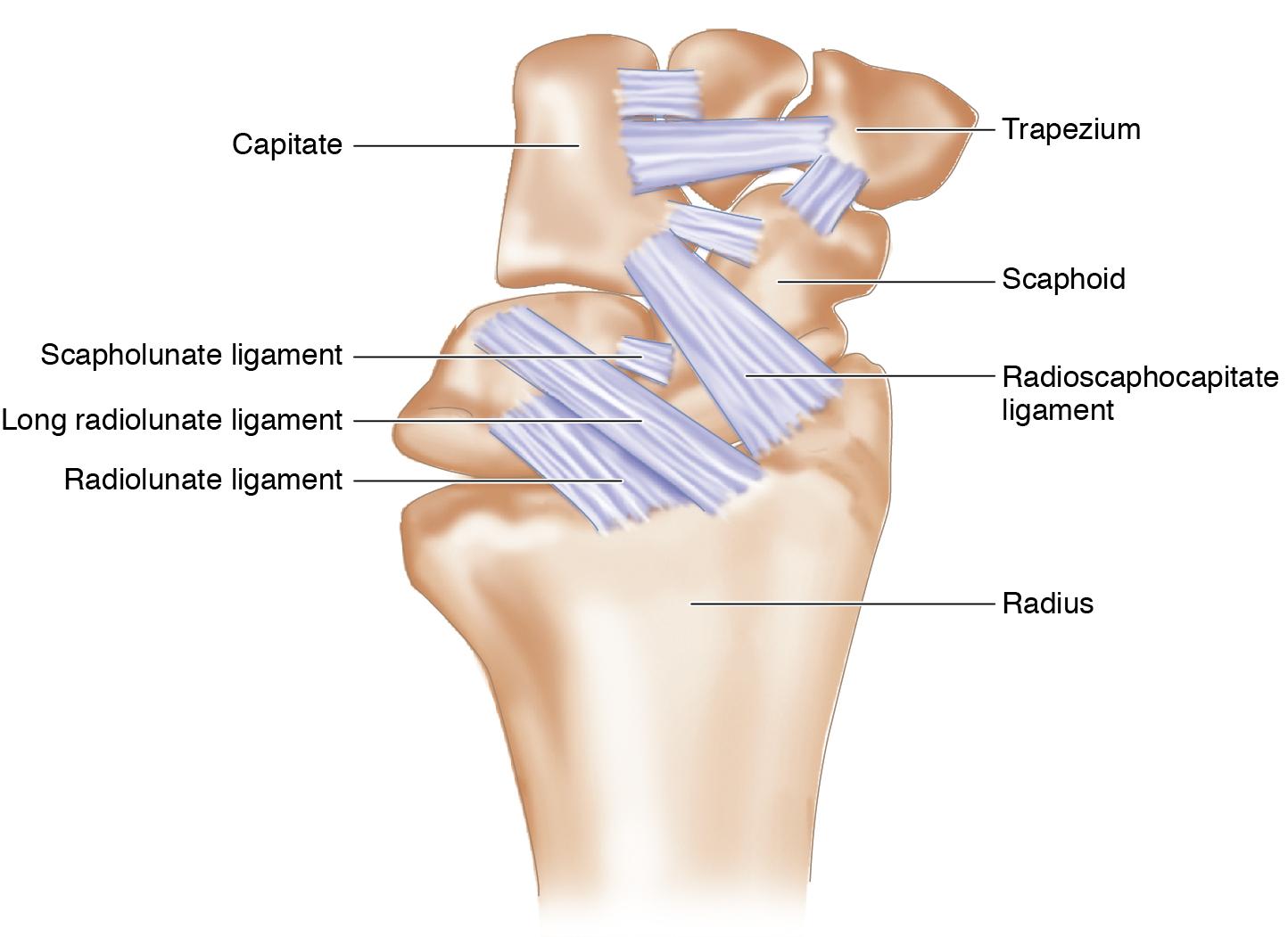
Dorsally, the proximal pole of the scaphoid is relatively immobile because it is surrounded by the dorsal rim of the radius, RSC ligament, long radiolunate ligament (LRL) and scapholunate interosseous ligament (SLIL). On the other hand, the distal pole of the scaphoid, located volarly, is mobile and susceptible to fracture at the waist when subjected to an axial load.
The dorsal groove courses the length of the scaphoid and provides attachment surfaces for ligaments and blood vessels. The dorsal blood supply (branch of the radial artery), which delivers 70% to 80% of the blood supply, courses from distal to proximal through the bone. Occasionally, there is a partial volar contribution to this blood supply.
A palmar branch of the radial artery supplies the scaphoid tubercle, accounting for 20% to 30% of the scaphoid blood supply.
Because of the distal-to-proximal course of the blood supply, proximal fractures take longer to heal than distal fractures.
This also explains why the scaphoid is at higher risk for avascular necrosis in proximal fractures ( Fig. 25.10 ). Once avascular necrosis has developed, there is a high likelihood of nonunion.
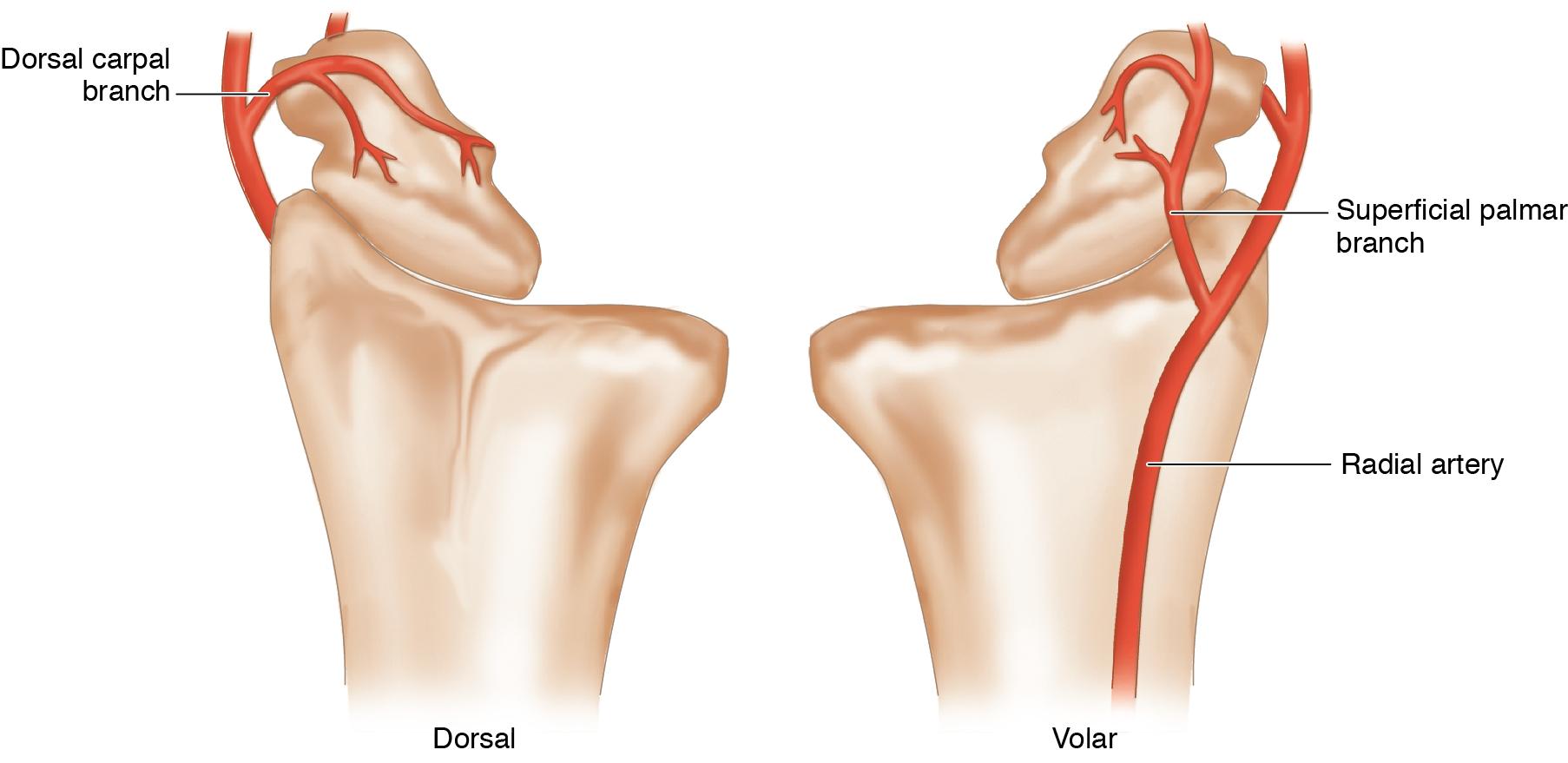
A rolled towel can aid in flexion or extension of the wrist to achieve a central screw trajectory perpendicular to the fracture site.
The wrist should be flexed as much as possible when performing fixation through a dorsal approach and extended when using a volar approach.
Become a Clinical Tree membership for Full access and enjoy Unlimited articles
If you are a member. Log in here